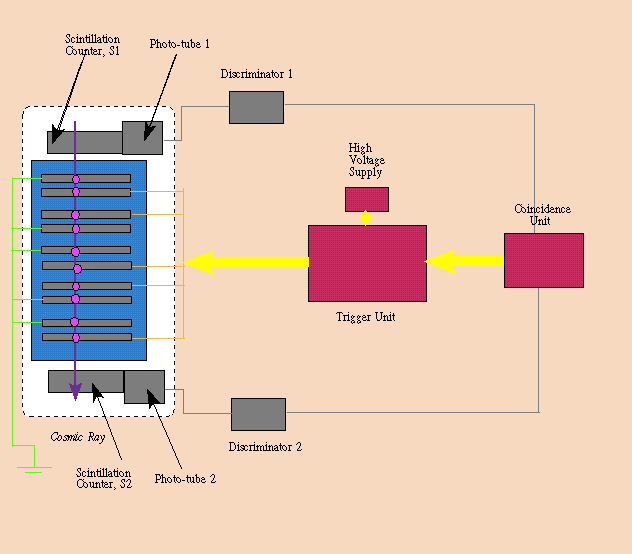

If the coincidence unit receives the signal from the top and bottom scintillator together, then it will pass a signal to the triggering unit. The triggering unit is essentially a capacitor charged up to a voltage of 6KV. On receiving the signal from the coincidence unit this capacitor will be caused to discharge, and approximately 80% of the 6KV voltage will be applied to one of the two plates of each module.
Thus a potential difference exists across each module of 4.8KV. This is a very unstable situation, of which the modules can't stay like it for any length of time. The plates must discharge.
This discharge will occur along the easiest path possible. The easiest path is through the ionised track left behind in the Ne-He by the passage of a cosmic ray. Therefore the plates will discharge down the ionised track of the cosmic ray, and hence the characteristic spark is observed, and the 'crack' from the discharge is heard.
Shown on the diagram above is the sparks (pink circles) along the track of the cosmic ray which the spark chamber has detected.
Return to Stage 1
Return to Stage 2
Click here
to see a more detailed description of how a spark is formedReturn to the Home Page